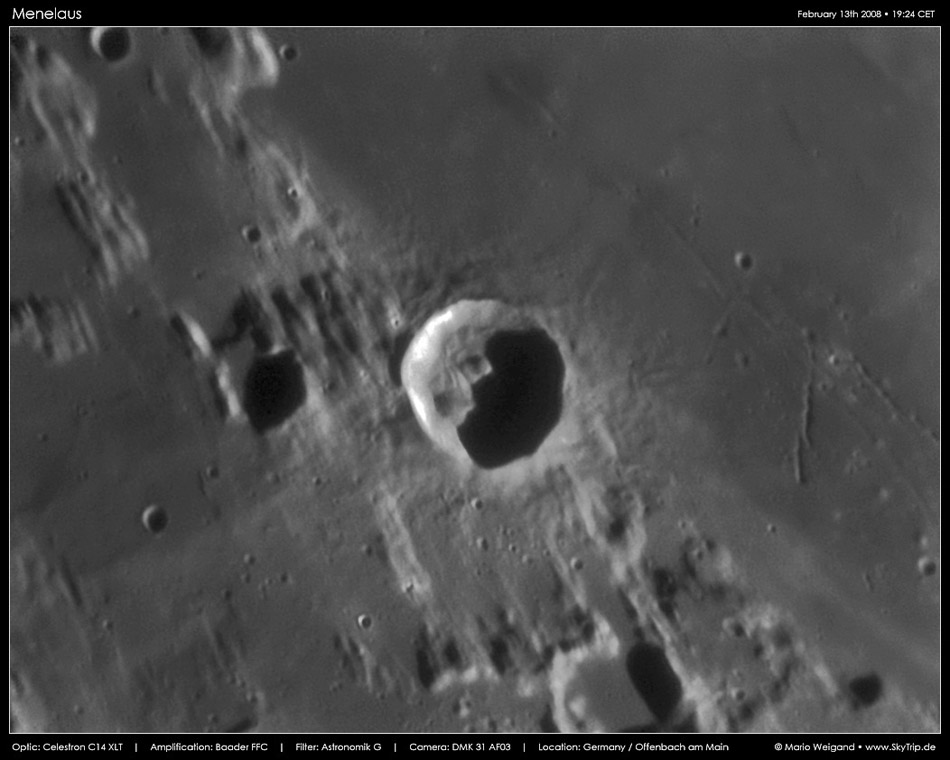LPOD Feb 19, 2008
YES

image by Mario Weigand, Offenbach am Main, Germany
Are there still nearside named craters for which no LPOD image has appeared? Very much so - nearly all of the named craters within 20° of the limb, but also many closer to the center of face. Mario's crisp image of Menelaus is the first LPOD image - other than very wide views - to show the crater's interior. Menelaus has a typical morphology of fresh craters its diameter - 26 km. The rim is sharp, with steep, uninterrupted slopes that lead to piles of talus that crowd the floor. Mentally compositing Mario's view with an opposite lighting [/Menelaus image] by François Emond shows that most of the slumped material is on the crater's south to southwestern floor, with the opposite side more flat. Under high Sun the southern rim is very bright and a rayed zone is visible (even in Mario's image) to the south, and another extends eastward; the long ray that crosses Serenitatis does not appear to come from Menelaus. The lack of a symmetrical ray system suggests an oblique impact, which has been suggested before, but based on the Serenitatis ray and an off-center central peak. There is a mystery here, and a possible solution - oblique impact - but we don't know which evidence to disbelieve.
Chuck Wood
Technical Details
See edges of image
Related Links
Rükl plate 23
Prior, enshadowed LPOD of Menelaus
Mario's website
SOMETHING NEW!
To post comments regarding this LPOD, please click here and enter your text just below this line. Perhaps if comments are more visible, there will be more of them! You will not see the Edit tab unless you register for the wiki. Please do not edit the LPOD itself!
Is this the correct place to post LPOD messages? Unfortunately, the procedure for posting messages is a bit confusing.
Anyway, I was wondering about the broken crater walls and striations in the Haemus Mountains to the west of Menelaus. I assume this was caused by material ejected from one of the basins. Did the ejecta come from Mare Imbrium to the northwest? Or did it come from Mare Tranqullitatis to the southeast?
--Bill
Bill - I moved your comment down to the bottom of the page - easy to do. If you step back from this closeup of one area you can see that the linear gashes converge within Imbrium - these are all carved by the ground-hugging surge of ejecta from Imbrium. Slitting thru (just made that up phrase) high terrain and pastily covering other, the ejecta totally resculpted this area.
Chuck
You can support LPOD when you buy any book from Amazon thru LPOD!